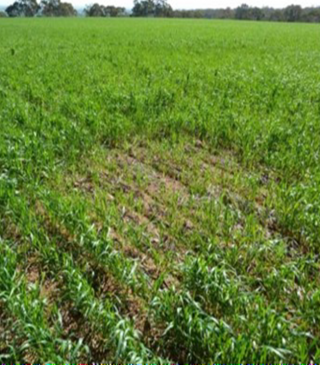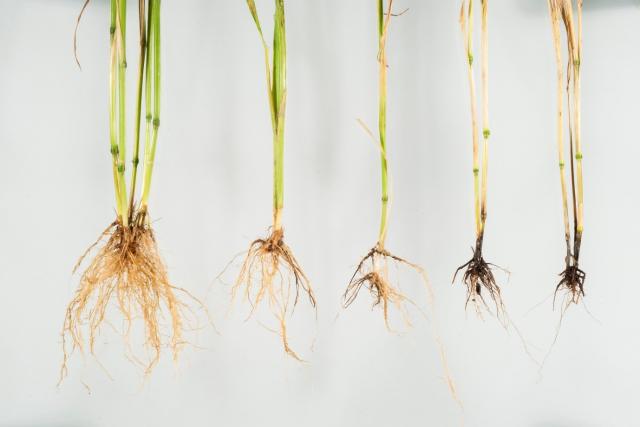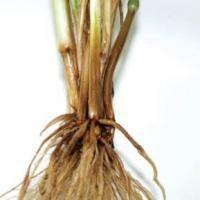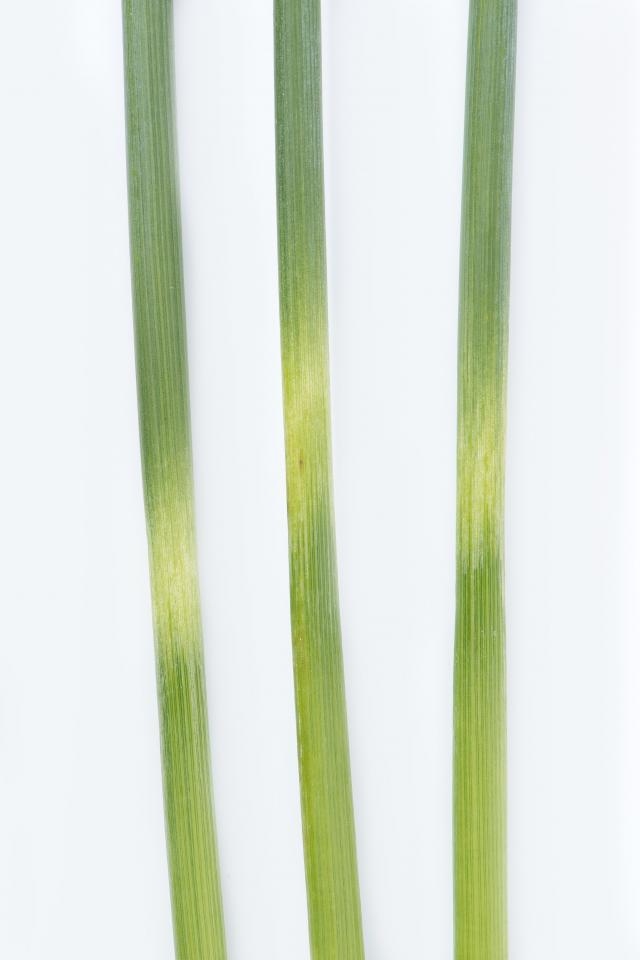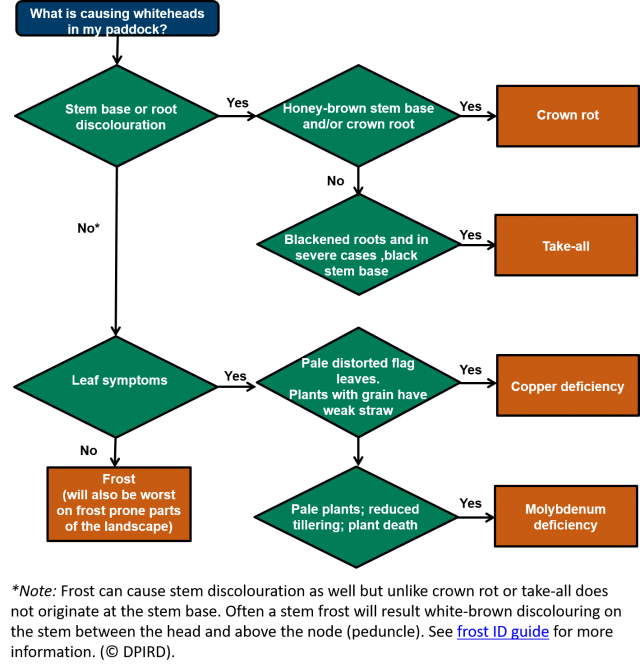SnapShot: Identifying cereal root diseases
Root diseases – Surely not all those patches are caused by Rhizoctonia? How do I know if the whiteheads were caused by a soilborne pathogen or frost?
Root diseases can be difficult to detect and diagnose but they must be identified correctly to enable appropriate control measures to be implemented. In WA there are several root diseases that can have significant impacts on grain yield including rhizoctonia bare patch, root lesion nematode (RLN), take-all, fusarium crown rot, cereal cyst nematode, common root rot and pythium root rot.
This article will cover some common root disease symptoms, how to correctly identify what root diseases are causing these symptoms and disease testing options.
Checking for root diseases
There are a range of tools available for growers and agronomists to identify pests and diseases that occur in crops during the growing season. Initially, a survey of the whole paddock should be conducted to determine if the issue is widespread or limited to patches.
If diseased plants are found, carefully dig up some of the plants ensuring most of the root system remains intact. If the sample is coming from a disease “patch” ensure to collect samples from within the patch, the edge of the patch and heathy plants as a comparison. Gently shake off the bulk of the soil then wash the roots in a bucket of water. If the soil contains lots of clay, the plants should be soaked for an hour so the dirt can be easily washed off from the roots. Unhealthy plants may have reduced root mass, shortened roots, damaged root tips (spear tips), reduced root hairs, removal of the root sheath, stem discolouration, root discolouration or lesions.
The MyCrop apps, which is available for wheat, barley, canola, pulses and oats, may be able to assist you with diagnosis.
Confirmation of diagnosis
Growers with in paddock disease symptoms are advised to check for the presence of the disease and confirm suspected infections by taking plant samples and sending them to the Department of Primary Industries and Regional Development's Diagnostic Laboratory Services (DDLS) - Plant pathology lab. Do not send washed plants to the laboratory. A sampling protocol can be found on the DDLS website.
PREDICTA B soil tests can also be used to determine what soilborne pathogens and nematodes are present in the paddock and what risk they pose in causing disease in crops. PREDICTA B testing is generally performed pre-season and is available through accredited agronomists and resellers.
For more information on testing, check out the diagnosing root disease section of the December 2017 Protecting WA Crops newsletter.
Common soilborne diseases which cause patchy cereal crops
Patches of poor growth are often noted in cereal crops. Patches in cereals are not unique to one particular disease, although, in many cases, Rhizoctonia solani AG8, the cause of rhizoctonia bare patch, or root lesion nematodes (RLN), may be the culprits. Take-all as well as non-disease issues can also cause patches.
Rhizoctonia bare patch
Rhizoctonia patches can occur in all cereals, although barley is more susceptible than wheat, while oats are the least susceptible of the cereals. The Rhizoctonia strain R. solani AG8 can also cause patches in pastures, lupins and canola. There are other strains of R. solani that are host-specific, such as AG2-1/ZG5 which causes hypocotyl rot in canola.
Symptoms: Well defined patches with a distinct edge between healthy and unhealthy plants. The plants within the patches will be stunted and can have yellowing leaves (Figure 1). Less distinct patches may also occur if infection occurs later in the season. The roots of the plants in the patch and around the edge of the patch will have shortened roots ending in spear tips with brown lesions (Figure 2A and B).
For detailed management options for R. solani AG8 refer to the new GRDC Tips and Tactics for the western region Rhizoctonia.
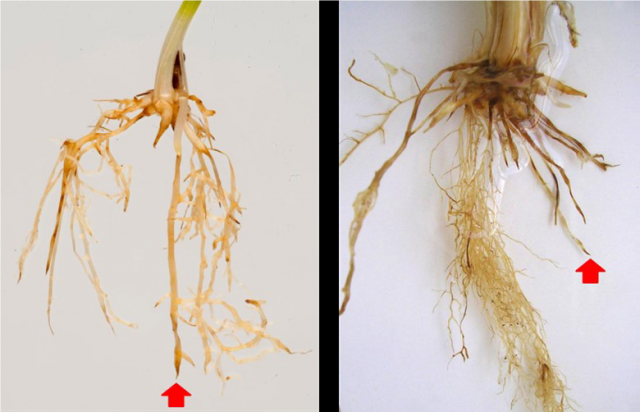
RLN
There are several species of RLN (Pratylenchus species), all of which have a wide host range. Wheat, barley, canola and oats are all susceptible crops. Although you can detect RLN damage by examining washed roots, its best to confirm diagnosis. Send off a plant sample to DDLS or have a soil sample taken by an accredited operator for testing using PREDICTA B to determine which species of RLN are present.
Symptoms: RLN patches do not have defined edges (unlike rhizoctonia at early infection). Cereal crops infested with RLNs often look wavy or clumpy with more indistinct patches of poor growth which can become less obvious as the season progresses (Figure 3). Plants in the patches will be stunted with poor tillering in cereals and can have yellowing leaves. The root symptoms of RLN infestations are varied and often less distinct than Rhizoctonia; including the reduction in length and number of lateral roots (root hairs), brown lesions with outer layer of the roots degraded in parts, and the appearance of “noodle roots”, so called for the visual similarity to 2-minute noodles (Figure 4). RLN's do not cause whiteheads to cereals.
For detailed management options for RLN refer to the new GRDC Tips and Tactics for the western region Root-Lesion nematodes.
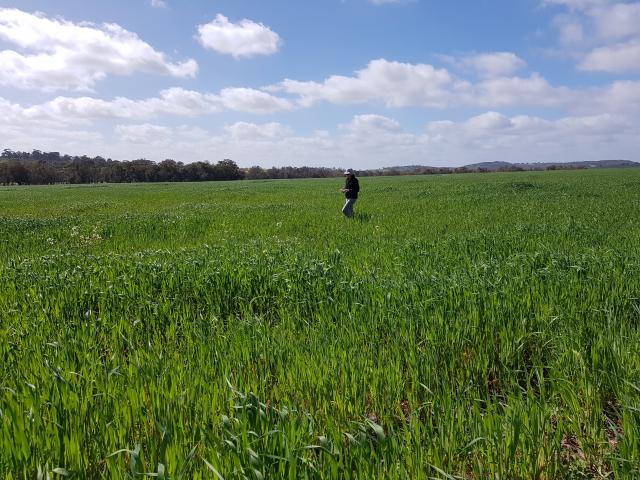
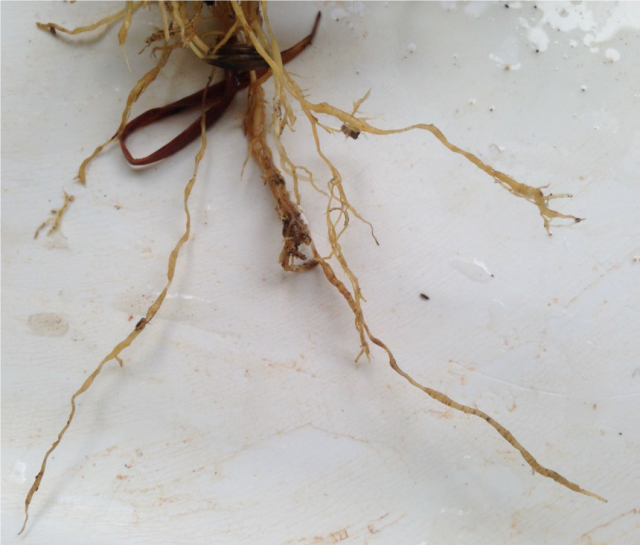
Rhizoctonia and RLN disease complex
Unfortunately, in many cases, both RLN and R. solani can be found to cause disease in the same patch. Disease complexes are common and are currently being investigated by Department of Primary Industries and Regional Development (DPIRD) staff.
Take-all
Take-all is a soilborne disease of cereal crops and is most severe in the higher rainfall areas.
Symptoms: Indistinct patches of poor growth in the crop; these patches can range from a few metres across, to significant areas of crop. Closer inspection of individual plants will indicate discolouration of the crown, roots and stem base. Blackening of the centre of the roots is symptomatic of an early take-all infection (Figure 6). Severely infected plants will have a blackened crown and stem base and can easily be pulled from the soil with no attached root system. Any remaining roots are brittle and break off with a ‘square end’. Whiteheads may occur later in the season in severe infections causing the crop to hay-off early. Infected plants will produce pinched grain, with severe infections yielding little harvestable seed in the head (hence the name ‘take-all’).
Growers should also refer to DPIRD's Diagnosing take-all in cereals page.
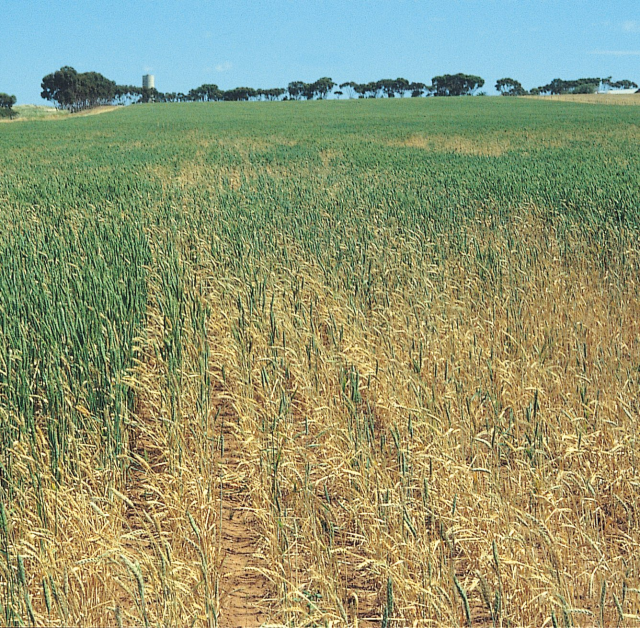
Common soilborne diseases which cause whiteheads in cereals
There are several soilborne pathogens which can cause whiteheads in crops including take-all, crown rot, as well as other issues, such as frost and copper and molybdenum deficiency.
Take-all
See above
Crown rot
Crown rot, caused predominately by Fusarium pseudograminearum, a stubble-borne fungus, infects plants at the crown through contact with infected cereal stubble from previous years. Infected stubble can remain viable for many years. Crown rot affects wheat and barley and has a small yield reduction in oats.
Symptoms: Infected tillers of plants may show whiteheads that fail to fill grain in seasons with a dry finish. In severe cases the entire plant develops whiteheads. The disease also shows distinctive honey-brown discolouration of the stem base or lower node when leaf sheaths are removed (Figure 8). The honey-brown discolouration on the stem distinguishes crown rot from take-all, which also causes whiteheads, but produces black roots and black stems in severe cases. Direct signs of the fungus may sometimes, but not always, be present on the crowns as a pink colouration, particularly if there has been recent rain.
For more details on crown rot see DPIRD's Diagnosing crown rot of cereals page and the GRDC Tips and Tactics - Crown Rot in winter cereals (Western region) factsheet.
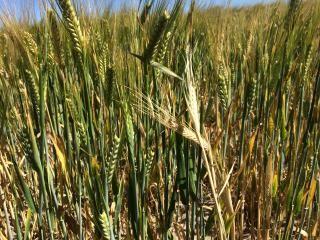
Frost
Widespread frost events are common across WA. Severe frosts, can cause significant damage to grain crops. The DPIRD frost research group have released a Frost Identification Guide. The guide also provides information on disease expression, which can commonly be confused with frost damage.
Frosted plants can have stem, head and grain symptoms depending on the timing of the frost event and plant stage. Crown rot and take-all (in severe cases) will have discolouration at the stem-base, unlike frost which occurs above the stem base.
PREDICTA B accreditation course
The PREDICTA® B root disease risk management course, provides accreditation for delivering PREDICTA® B – the DNA- based soil testing service which enables growers to identify the pathogens posing greatest risk to their farm.
The course will be held in Perth on Monday 10 December: Technology Park Bentley, WA
Click here to register or contact Loren Revell-Karutz on ph: +61 (8) 8332 3277 or email: loren@agcommunicators.com.au for more information.

